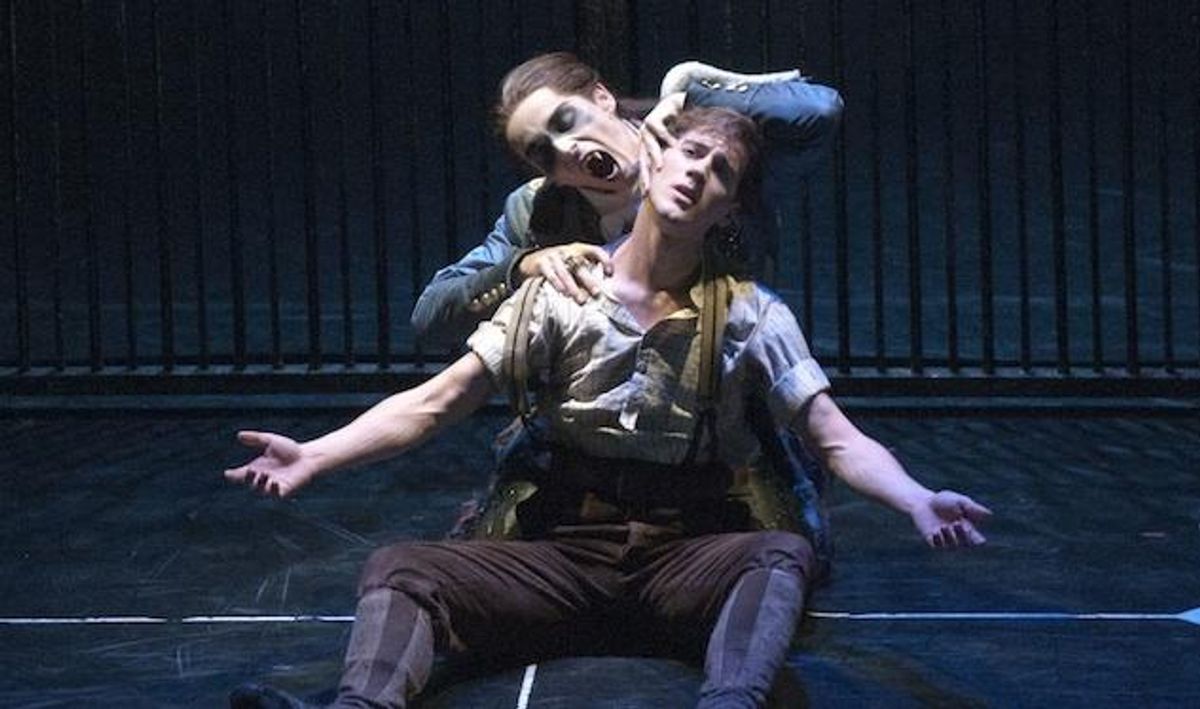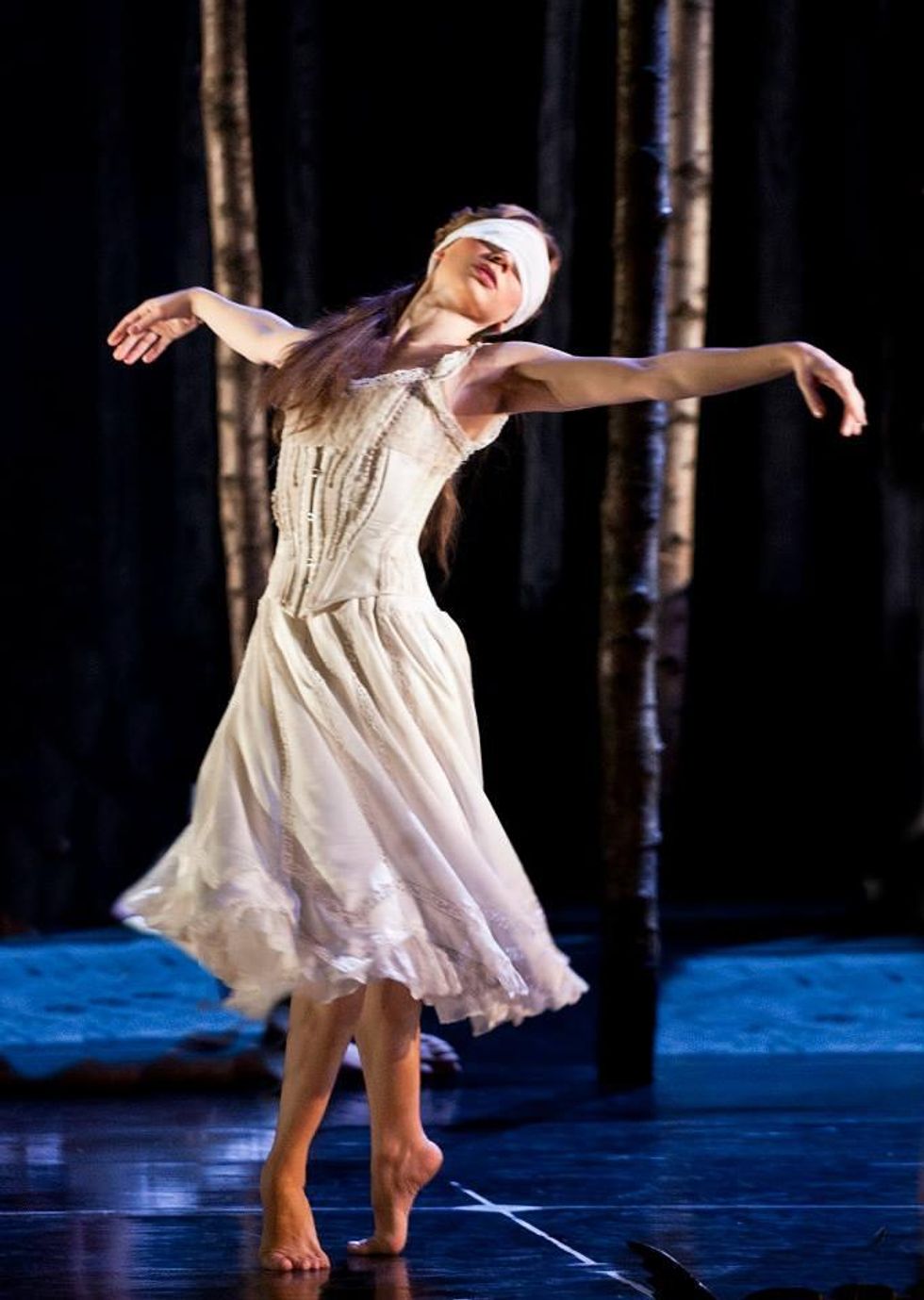Christopher Marney as Count Lilac and Dominic North as Leo | Photo by Mikah Smillie; Photo of Hannah Vassallo as Aurora by Simon Annand
Like the heroine Aurora, waking from a century of sleep to find a prince by her side, Tchaikovsky would be pleased to find his ballet score for Sleeping Beauty still a fanciful muse for a certain gentleman today, 120 years after its premiere.
That gentleman, the British choreographer Matthew Bourne, has flirted with Tchaikovsky in the past, coming at the composer's other classics from unexpected angles. His Nutcracker! from 1992, reimagined the Christmas staple in a bleak, Dickensian orphanage; his 1995 Swan Lake famously substituted delicate women for ferocious men.
Long intimidated by Sleeping Beauty's complicated score, one of the most beloved in the dance repertory, Bourne has spent the last nearly two decades adapting other popular stories from film and literature to the stage, among them Edward Scissorhands (2005) and Dorian Gray (2008). In the process, he has become one of the most successful dance directors in the world, managing to blend the largely boutique arts of contemporary dance and ballet with popular theater.
Now, inspired by the 25th anniversary of his company, New Adventures, Bourne finally got around to tackling Sleeping Beauty and completing his trilogy of Tchaikovsky ballets. The work premiered in London late last year and is currently touring the United States, landing in New York City on October 23 before heading on to Charlotte, Washington, D.C., and Los Angeles through December.
 Reawakening Sleeping Beauty feels appropriately full-circle for Bourne himself, but does ballet as a whole--which unapologetically recycles the same vintage stories again and again - really need another Sleeping Beauty?
Reawakening Sleeping Beauty feels appropriately full-circle for Bourne himself, but does ballet as a whole--which unapologetically recycles the same vintage stories again and again - really need another Sleeping Beauty?
Yes, argues Bourne, if you can find something new in it. "It's like approaching Shakespeare," he says, suggesting that great stories always have something to offer modern audiences. Working independently and outside the buttoned-up and often artistically conservative world of ballet, Bourne says he was free to boldly reimagine both Aurora's story and the dance styles that illustrate it.
"I'm not there to maintain the tradition of the choreography and the handed down nature of a ballet company," he says. "I can create something fresh."
In this case, that means a gothic narrative spanning over one hundred years, from 1890, when the first Sleeping Beauty premiered, to the present day; the introduction of vampires, which helps explain how the main characters stay young for a century and conveniently taps into our current pop-culture obsession with blood-suckers; and his trademark subversion of gender roles.
"I changed the sex of the fairy to a man," Bourne says, referring to the Lilac Fairy who, in his version, has transitioned into Count Lilac, a benevolent vampire who bites the male love interest to give him eternal life. "They have an almost sense of bromance," Bourne explains, adding coyly, "Anything vampiric has a sexual subtext and tension."
Ballet in general tends to present romance in strictly chaste and heterosexual terms; Bourne's explicit foregrounding and exploration of his characters' sexuality is often the most audacious and thrilling element of his remakes. While Sleeping Beauty doesn't explicitly present gay characters, Bourne acknowledges that, because it's his work, it's infused with a gay sensibility (and thus, some unintended poetic justice for Russia's current attempts to deny Tchaikovsky's sexuality). After all, Bourne says with a laugh, "it's full of fairies!"
Yet aside from updating the sexual politics, what does Sleeping Beauty (yet another classic fairytale, such as Cinderella) mean to us today? "There must be something deep in these stories for them to be constantly rethought," Bourne says. For him, Aurora's story is something of a coming-of-age tale, capturing the tension between childhood and adulthood, the inability of parents to let their children go and a child's hunger for freedom and self-expression. "These are things we can relate to," he says.
Sleeping Beauty takes place at New York City Center Oct. 23-Nov. 3




 Reawakening Sleeping Beauty feels appropriately full-circle for Bourne himself, but does ballet as a whole--which unapologetically recycles the same vintage stories again and again - really need another Sleeping Beauty?
Reawakening Sleeping Beauty feels appropriately full-circle for Bourne himself, but does ballet as a whole--which unapologetically recycles the same vintage stories again and again - really need another Sleeping Beauty?















































































